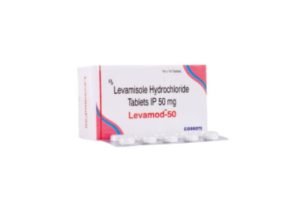
Cefaclor: Full Review
Cefaclor is a second-generation cephalosporin antibiotic used to treat a variety of bacterial infections. It is effective against a broader spectrum of bacteria than first-generation cephalosporins and is administered orally.
1. Mechanism of Action
Cefaclor works by inhibiting bacterial cell wall synthesis. It binds to penicillin-binding proteins (PBPs) located in the bacterial cell wall, preventing the formation of cross-links between peptidoglycan layers. This action weakens the cell wall, leading to bacterial lysis and death. Cefaclor is bactericidal, meaning it kills bacteria rather than merely inhibiting their growth.
2. Uses
Cefaclor is used to treat a variety of infections, including:
- Respiratory Tract Infections: Such as bronchitis, pneumonia, and sinusitis.
- Ear Infections: Including otitis media.
- Skin and Soft Tissue Infections: Such as cellulitis and impetigo.
- Urinary Tract Infections (UTIs): Including cystitis and pyelonephritis.
- Pharyngitis and Tonsillitis: Often caused by Streptococcus pyogenes.
Cefaclor is effective against a broader range of bacteria than first-generation cephalosporins, particularly for some Gram-negative organisms.
3. Dosage and Administration
Cefaclor is administered orally in the form of capsules, tablets, or suspension. The usual dosage varies based on the infection being treated:
- Adults: 250 mg to 500 mg every 8 hours, with the total daily dose usually ranging from 750 mg to 1.5 grams.
- Children: Dosing is based on weight and the infection, often ranging from 20 mg/kg to 40 mg/kg per day, divided into 2 or 3 doses.
4. Contraindications
Cefaclor is contraindicated in:
- Patients with hypersensitivity to cephalosporins or penicillins (due to potential cross-reactivity).
- Patients with a history of severe allergic reactions to beta-lactam antibiotics.
5. Side Effects
Common side effects of cefaclor include:
- Gastrointestinal issues: Nausea, vomiting, diarrhea, and abdominal pain.
- Allergic reactions: Rash, itching, and in rare cases, anaphylaxis.
- Hematologic effects: Rarely, leukopenia, thrombocytopenia, or eosinophilia.
- Renal effects: Rare instances of interstitial nephritis.
- Superinfection: Prolonged use can lead to the overgrowth of resistant organisms or fungal infections.
6. Drug Interactions
- Anticoagulants: Cefaclor can enhance the effects of anticoagulants like warfarin, increasing the risk of bleeding.
- Probenecid: May increase cefaclor levels by inhibiting renal excretion.
- Other nephrotoxic drugs: Caution is advised when used with other drugs that affect kidney function.
7. Special Precautions
- Renal Function: Dose adjustments may be necessary for patients with renal impairment to prevent toxicity.
- Allergies: Patients with a history of penicillin allergy should be monitored for potential cross-reactivity with cephalosporins.
- Superinfections: Long-term use can lead to the development of resistant organisms or fungal infections.
8. Resistance
Resistance to cefaclor can occur through various mechanisms:
- Beta-lactamase production: Enzymes that break down cefaclor, reducing its effectiveness.
- Altered PBPs: Bacteria may alter their PBPs to reduce cefaclor binding.
- Efflux pumps: Some bacteria may pump cefaclor out of the cell before it can act.
9. Storage and Stability
Cefaclor should be stored at room temperature, away from moisture and heat. The oral suspension should be refrigerated and used within 14 days.
10. Summary
Cefaclor is a second-generation cephalosporin effective against a broad spectrum of bacterial infections, especially those caused by Gram-negative organisms. It is commonly used for respiratory tract infections, ear infections, and UTIs. While generally well-tolerated, cefaclor can cause gastrointestinal disturbances, allergic reactions, and other side effects. Careful consideration of patient allergies, renal function, and potential drug interactions is essential for effective and safe use.







